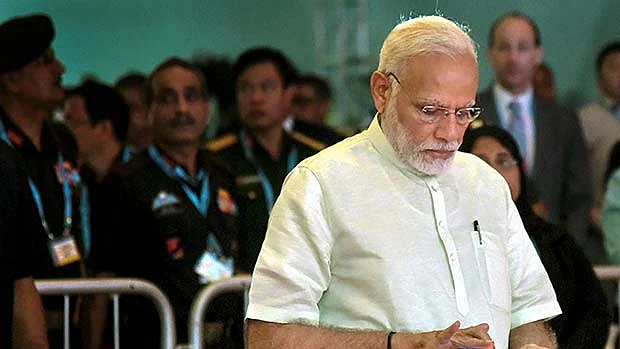Herald View: Modinomics, high fuel prices and the tumbling Rupee
As petroleum prices continue to pinch consumers, trade and transport, the inevitable question is whether the Modi Government has handled the crisis well

Narendra Modi rode to power in 2014 by convincing the voters that he had a magic wand to drive fuel prices down and raise the Rupee against the Dollar. With petrol prices across India touching a record high this week with petrol touching Rs 86 per litre in Delhi and diesel at Rs 75 a litre, and the Rupee tumbling to a historic low against the Dollar, life has come a full circle for Modi.
The Brent Crude is trading at a little over $77 and the Reserve Bank of India has already been selling Dollars to stem the free fall of the Rupee. Flashback to 2008 when the Brent Crude reached its historical high of $145, people in India under the leadership of then Prime Minister Manmohan Singh paid Rs 50 for a litre of petrol.
Also, much across the tenure of the UPA-2 Government, Brent Crude traded upwards of $100. As international oil prices do not show any sign of coming down in the immediately foreseeable future, one shudders to think what may happen if international crude prices started reaching the figures that Manmohan Singh had to contend with.
With moves like demonetisation and hasty implementation of the GST regime, the Modi government has already broken the back of small and medium businesses which provide maximum employment and cushions the country’s economy against external circumstances beyond New Delhi’s control.
While the Petroleum Minister now blames the rise in prices on external factors, the Modi Government should count its blessings that the opposition is more responsible today than Mr Modi and his colleagues in the BJP during the tenure of UPA II in office. With diesel prices soaring, the resultant increase in cost of transportation has started affecting prices of essential commodities.
The Consumer Price Inflation, which slowed in July with prices of pulses and vegetables easing, is again slated to rise. Input cost inflation in the service sector has accelerated to the sharpest since November 2017, fuelled by higher oil-related prices. This will have the RBI worried as well. High international oil prices will no doubt stoke inflation and will affect growth.
The falling Rupee should have curbed imports and given a fillip to exports. Neither is visible though. As petroleum prices continue to pinch consumers, trade and transport, the inevitable question is whether the Modi Government has handled the crisis well.
Under far more stressful conditions, it is clear, the UPA was relatively able to keep prices down. In an election year, the Modi Government will be hard put to explain why and how it frittered away the oil bonanza and how it utilised the windfall. But whether the Government will pay a political price for its misadventure will depend on how successfully the opposition convinces the electorate of the extent of mismanagement on both fronts.
Follow us on: Facebook, Twitter, Google News, Instagram
Join our official telegram channel (@nationalherald) and stay updated with the latest headlines
